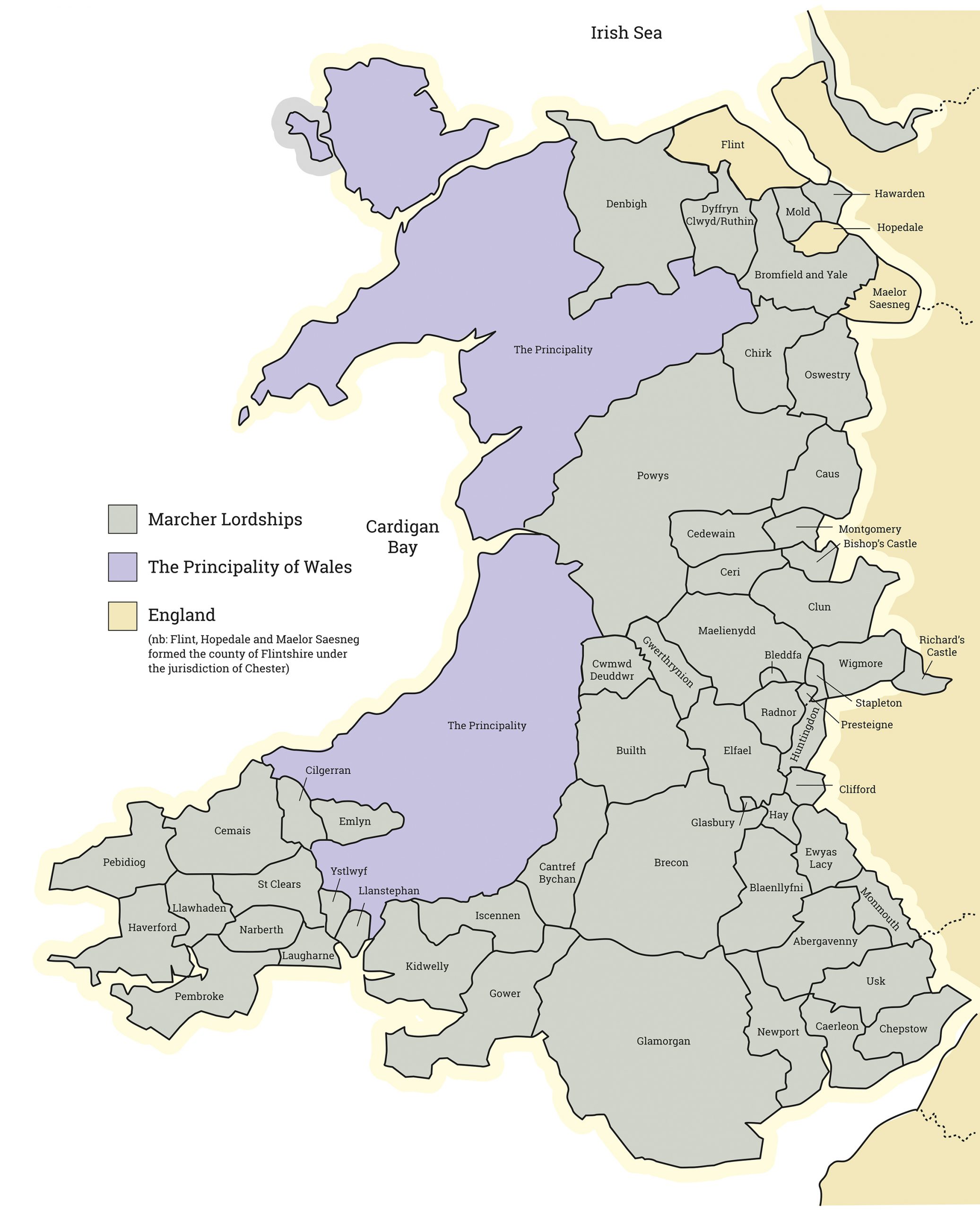The Society is currently focusing its attention on the fascinating history of the
Welsh Marches and more information will be posted here as it becomes available.
In general conversation the region of western England that straddles the border with Wales is often referred to as the Welsh Marches, but from a historical viewpoint this is quite misleading. From the late 11th to the early 16th century, the Marches covered a much larger territory. Some of the Marcher lordships were in what is now Wales, whilst others were in what is now England, but for about 500 years they formed a region between the two countries, neither politically in Wales nor in England.
After arriving in England in 1066, William the Conqueror set up a buffer zone adjacent to the Welsh border, creating the three earldoms of Chester, Shrewsbury and Hereford. In the centuries that followed, English lords with lands on the border moved westwards, taking over Welsh lands and establishing individual Marcher Lordships. They also used periods of weakness of the English Crown to withdraw their ‘English’ lordships from royal jurisdiction, in effect extending the Marcher lordships eastwards. By 1284 the March of Wales extended from North Wales, down the east side of the country and right along the south to Pembrokeshire, reducing the areas still under native Welsh control to parts of the west and north-west.
The borders and extent of individual Marcher lordships changed over the years, influenced significantly by the strength of native Welsh resistance. From time to time strong Welsh princes like Madog ap Maredudd (Powys), The Lord Rhys (Deheubarth), and Owain Gwynedd, Llywelyn the Great, Llywelyn ap Gruffudd (all Gwynedd) emerged to successfully reclaim parts of their country – for a time.
The Marcher lords’ English possessions were held of the king and, just like everyone else, they were subject to the king’s law and the king’s county sheriffs. In the March of Wales it was different. Although the Marcher lord still held the lordship from the crown, the Marcher lords enjoyed considerable autonomy to run their lordships as they wished. ‘The King’s Writ did not run’ in these lordships and each lord applied his own system of law, administration and taxation. These unique, semi-regal, powers originated from a combination of the harsh necessities of border life and from taking over the powers of the conquered Welsh rulers. They applied equally to the lordships withdrawn from English royal jurisdiction as to those conquered by the sword. The independence of the Marcher lordships continued until they were finally abolished by Henry VIII.
The map below shows the Principality of Wales and the Marcher lordships c1284 when the latter had reached their full extent. You can see the map full-page width by scrolling down

